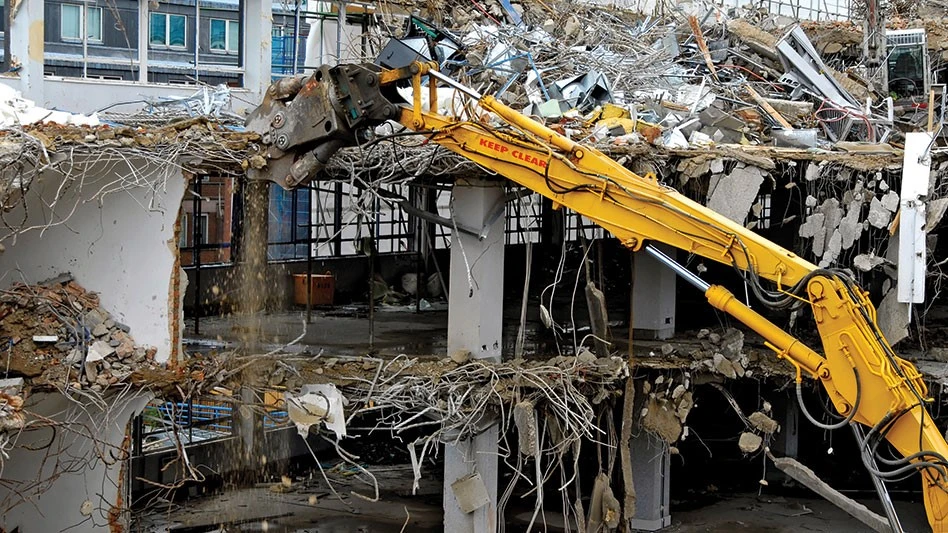

We have seen significant changes in the heavy equipment rental industry over the last several years. In our rapidly evolving world, the rental industry is not the only sector experiencing this, as unprecedented events have changed the way in which consumers interact with the world around them. From the increased use of digital tools to changes in purchasing behavior, the equipment rental industry is seeing a new wave of emerging trends as we look to 2022 and beyond.
The rental industry as a whole has worldwide reach and for good reason—equipment rental can be greatly beneficial to a company in many different situations. Renting involves a lower initial investment and avoids the incidental costs that come with owning heavy equipment. It also provides the opportunity to use a wide range of equipment to learn what suits the needs of each particular job.
While the rentals themselves have not changed, the way in which users rent in the construction and demolition field has. The last several years have seen a significant shift in behavior and business practices across a rapidly growing industry.
How rentals are used in the demolition space
Demolishing a building can be a complicated task as it is more than tearing walls down. Material testing and environmental reports are critical to ensure safety and to avoid contamination. Structural engineers also play a crucial role in preventing unexpected collapses. Operators, engineers and project managers require a variety of equipment to get the job done safely and effectively.
Another difficult aspect of demolition jobs is that specific sized machines or attachments often are needed, and they can vary greatly depending on the project, so rental equipment can play a large role. With rentals, teams can take on projects without the added cost of buying a machine that they might not get their money’s worth from long term.
Iconic in the demolition industry, bulldozers are by far the most popular rental when it comes to these projects. Excavators—particularly long-reach excavators—come in as a close second as a reliable and popular demotion rental. Finally, moving machines go hand in hand with demolition jobs, making loaders, skid steers and backhoes common within the industry.
The use of rental equipment in demolition is not uncommon, however, the rate and the way in which users are renting that equipment has evolved as global supply chain issues affect an increasingly digital world.
Supply chain and increasing demand
Ongoing global supply chain issues have affected the heavy equipment industry. As manufacturing slowed or stopped at the onset of the pandemic, many suppliers quickly sold out of their existing supplies and equipment. Resupply issues driven by a shortage of materials, coupled with the constraints on ocean and inland transportation, have made catching up with increasing demand for equipment a tall order.
Despite these growing issues, demand for heavy equipment has continued to surge. Aging infrastructure across North America has led to a wave of new projects—not to mention the jump in home renovations that has occurred throughout the pandemic. In fact, the American Rental Association, Moline, Illinois, projects a nearly 10 percent year-over-year increase in rentals, forecasting that the market will reach $52.5 billion in 2022. This would be a record for the industry, surpassing the 2019 peak of $50.9 billion. The demand for equipment is at an all-time high and continues to steadily climb.
Supply chain issues and manufacturing delays paired with increased demand and high use have made access to new equipment difficult. It is not uncommon to have wait times for new equipment be years long as costs and schedules for shipping and supply access become highly unpredictable. Waiting on the arrival of new equipment simply is not possible considering the deadlines many contractors and demolition workers face.
These ongoing supply chain issues and manufacturing delays have compounded the already existing challenges the demolition industry faced in gaining access to heavy equipment. Increasingly, those in the demolition space are turning to rentals to ease the challenge of finding the equipment they need in a timely manner.

A digital era
Arguably a more traditional industry, equipment rentals have had to adapt to a changing business environment as the world becomes increasingly digital. Workflows are changing from texts, calls, emails and faxes to touchless digital transactions made through e-commerce platforms.
The latest Red Book Statistics from the Basel, Switzerland-based Bank for International Settlements Committee on Payments and Market Infrastructures (CPMI) show that consumers have shifted from physical cash to digital and contactless payment instruments at a rate not seen since the CPMI started the Red Book Statistics in 2012.
The pandemic also has influenced trends in the rental industry and e-commerce. Safety concerns simply could not be ignored, and the need for digital, touchless transactions took off. The rental industry is not immune to this trend, as an increasing number of contractors are looking to find and rent equipment on a digital platform. While many rental transactions traditionally were completed over the phone or in person, the integration of digital engagement and transaction management platforms steadily is changing that norm.
The digital influence also has affected the way in which decisions are made on job sites and in companies. Data-driven decisions that optimize project efficiencies are critical in today’s demolition industry. Contemporary equipment is outfitted with smart sensors designed to gather data to provide operations teams with as much information about their equipment as possible. From service alerts to equipment use, machine learning and artificial intelligence can provide demolition contractors with valuable insights into their equipment use and company operations.
Furthermore, modern demolition contractors can communicate instantly as many employees are equipped with a smartphone providing instant access to specific apps linked to their equipment, team, schedule and machinery. Operators not only know more about their equipment but also can coordinate efficiently and share this data instantly while on a work site.
It is then only natural that this shift in digital integration applies to rentals as well. Users want straightforward, instant access to rental equipment availability, pricing options and transactions. As a society well-versed in apps like UberEats, Airbnb and TaskRabbit, renters want to be able to access equipment as easily as they can order anything else on their smartphones.
From supply chain issues to digital transformations, the world of heavy equipment rentals is a rapidly evolving one. I look forward to seeing what comes next in the future of heavy equipment rentals, particularly in the demolition space.

Explore the March April 2022 Issue
Check out more from this issue and find your next story to read.
Latest from Construction & Demolition Recycling
- NWRA, SWANA to partner on safety, education and advocacy
- Caterpillar announces collision warning system, other technology for medium wheel loaders
- ABC: Nonresidential construction adds jobs in April despite headwinds
- Demolition underway at former SC steel mill
- Turkey neglects US scrap in favor of Russian shipments
- Results of New Hampshire waste study reveal missed opportunities for diversion
- Alterra, Eco Materials open soil remediation facility in PA
- Steelmakers’ Q1 results largely profitable





